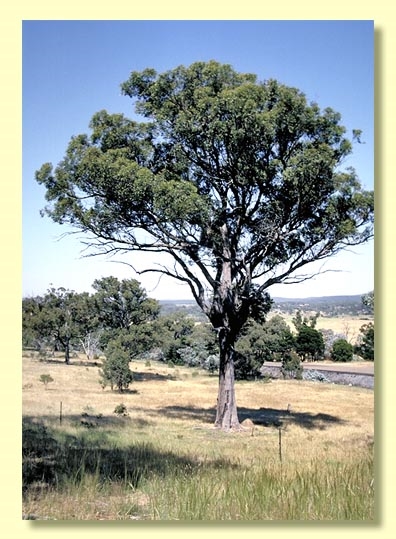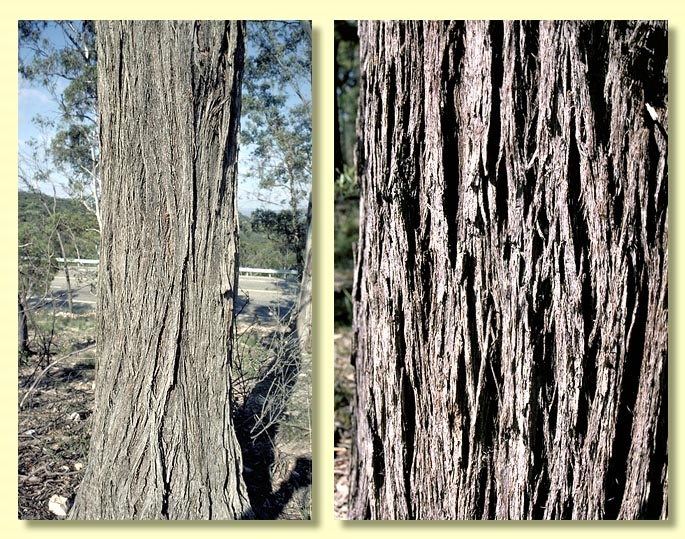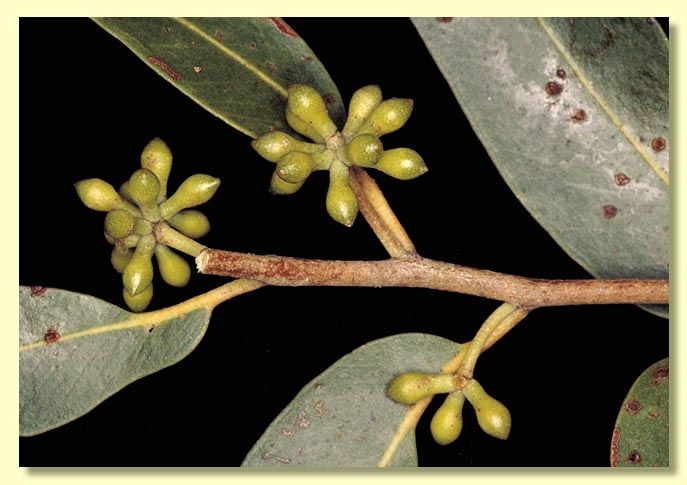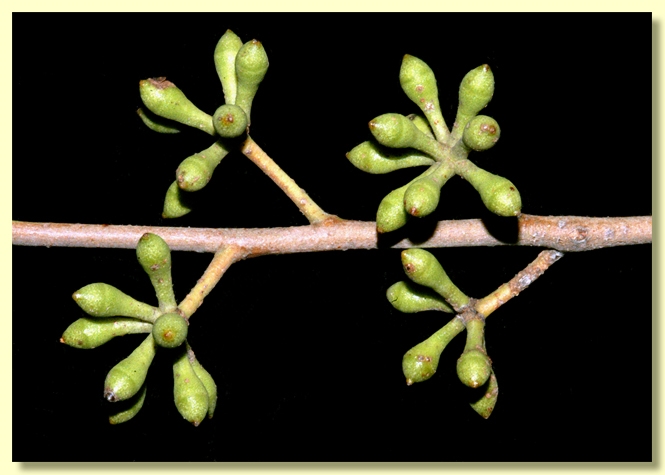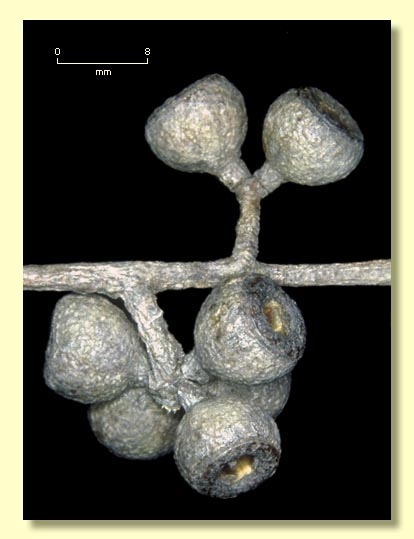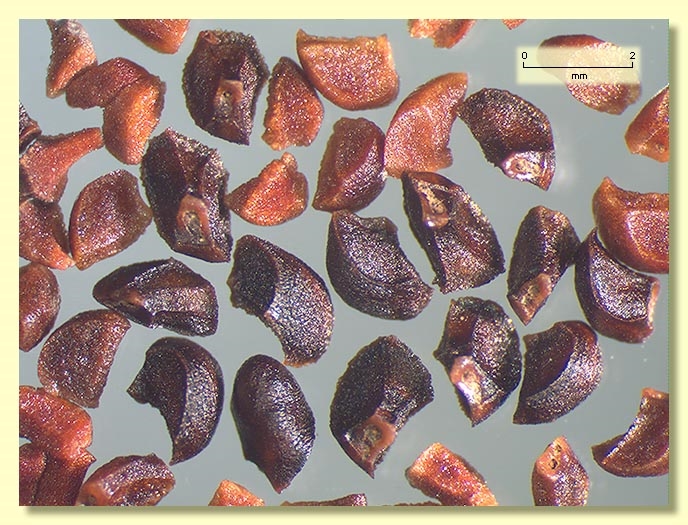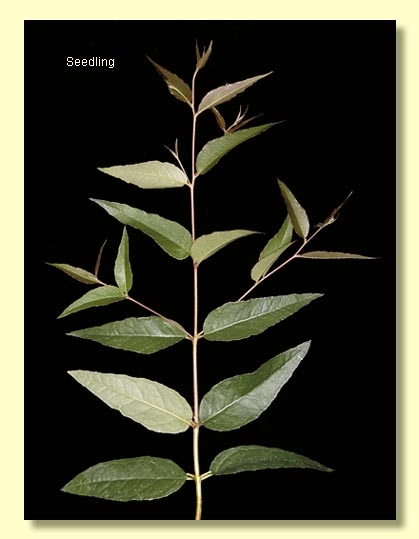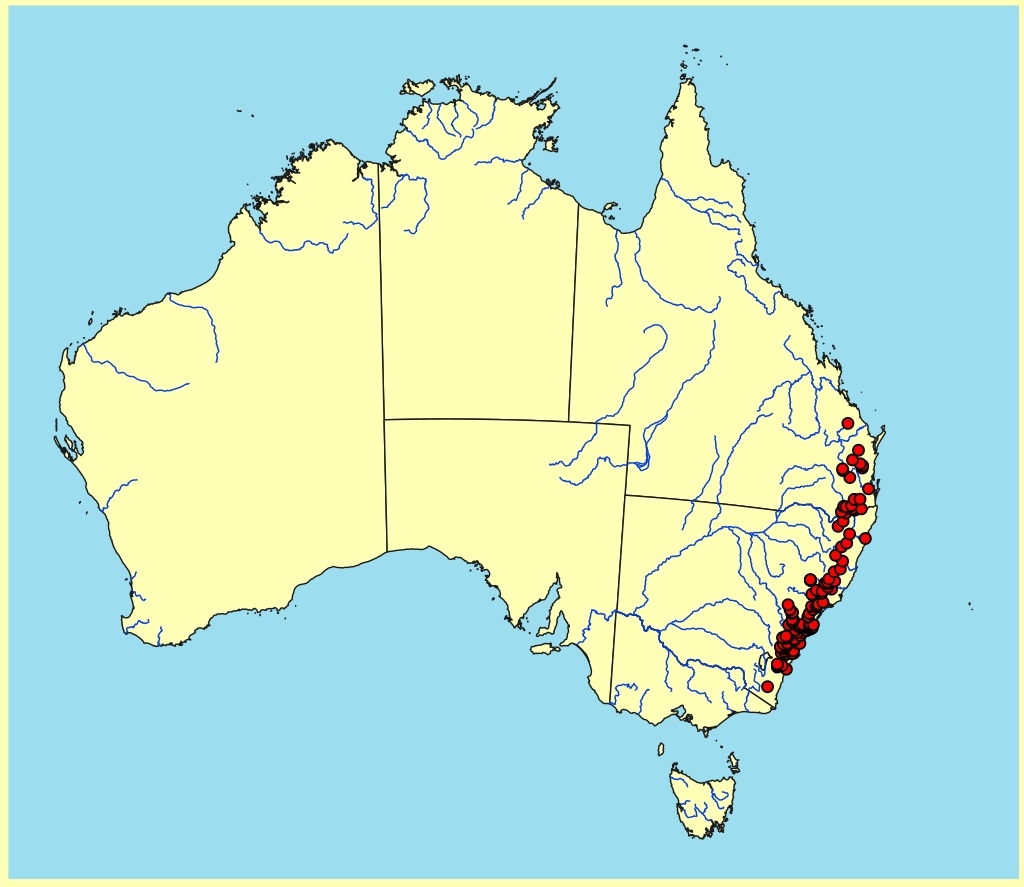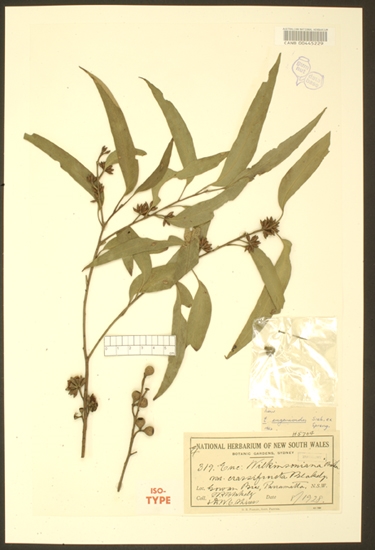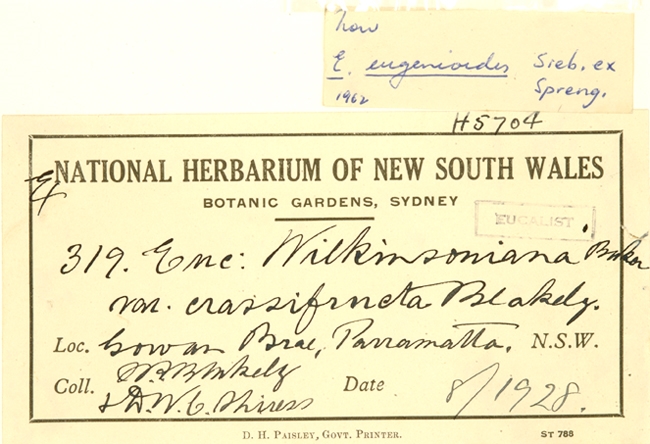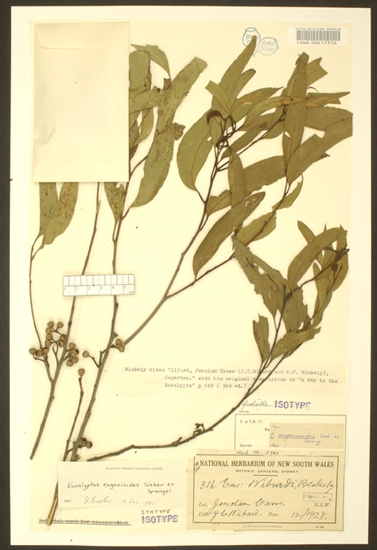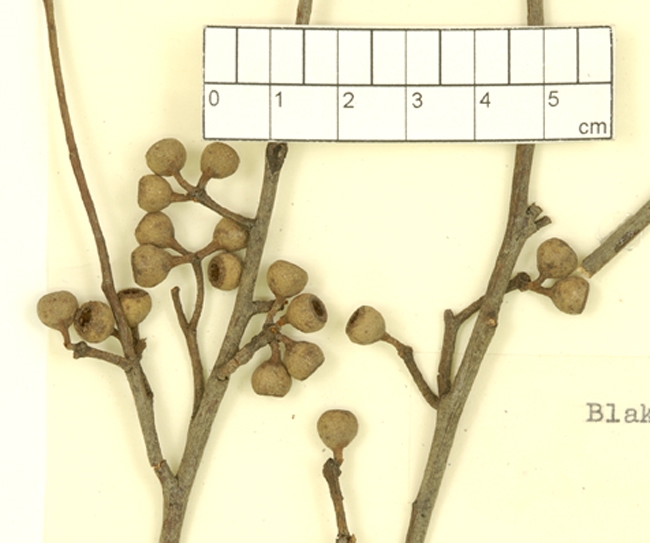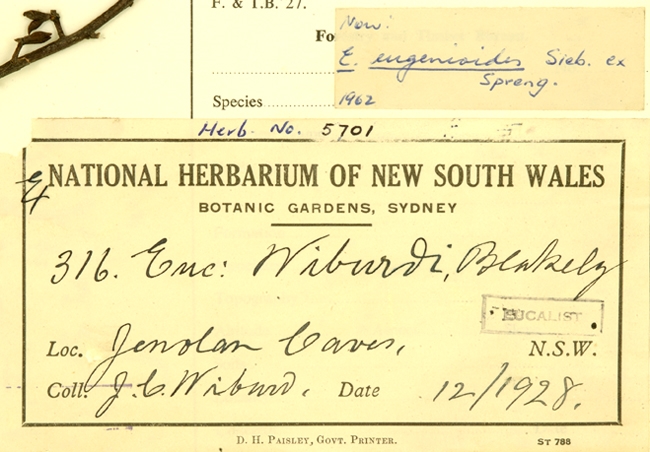Euclid - Online edition
Eucalyptus eugenioides
Eucalyptus | Eucalyptus | Capillulus | Pachyphloius
T: NSW, 1823, F.W.Sieber 479; holo: G; iso: BM, F, K, MEL, NSW, W.
Eucalyptus acervula Sieber ex DC., Prodr. 3: 217 (1828). T: NSW, 1823, F.W.Sieber 469; holo: G; iso: BM, F, G, NSW.
Eucalyptus laevopinea R.T.Baker var. minor R.T.Baker, Proc. Linn. Soc. New South Wales 23: 416 (1898). T: Barbers Creek, NSW, Feb. 1899, H.J.Rumsey s.n.; holo: ? NSW.
Eucalyptus wilkinsoniana R.T.Baker, Proc. Linn, Soc. New South Wales 25: 678 (1900). T. Barbers Creek, NSW, Feb. 1899, H.J.Rumsey s.n.; lecto: NSW, fide J.H.Maiden, Crit.Revis. Eucalyptus 8: 63 (1929).
Eucalyptus nigra R.T.Baker, Proc. Linn. Soc. New South Wales 25: 689 (1901). T: Richmond River District, NSW, Aug. 1990, W.Baeuerlen s.n.; syn: MEL, NSW; Cooks River, N.S.W, H.G.Smith; syn: herbarium of cited specimen not known to us.
Bark rough to small branches, longitudinally fissured, stringy, grey to grey-brown.
Juvenile growth (coppice or field seedlings to 50 cm): stems rounded in cross-section, scabrid with dense stellate hairs; juvenile leaves always petiolate, opposite for up to 10 nodes then becoming alternate, ovate to lanceolate, 4.5–8(10) cm long, 1.5–3.5(4.5) cm wide, bases rounded on lowest leaves, later tapering or oblique, discolorous, glossy on upper surface, green; growing tips, stems, leaf margins and midrib scabrid for many nodes.
Adult leaves alternate, petiole 0.6–2 cm long; blade lanceolate to falcate, (6.2)7–16 cm long, 0.9–3.5 cm wide, base oblique or tapering to petiole, thin-textured, slightly discolorous or concolorous, glossy, green, side-veins acute, sparsely to moderately reticulate, intramarginal vein parallel to and remote from margin, oil glands island.
Inflorescence axillary unbranched, peduncles 0.5–1.7 cm long, buds 9 to 15 per umbel, pedicels 0.1–0.5 cm long. Mature buds ovoid to obovoid or fusiform, 0.6-0.8 cm long, 0.3-0.4 cm wide, green to yellow, scar absent, operculum conical to beaked, stamens irregularly flexed, anthers reniform to cordate, versatile, dorsifixed, dehiscing by confluent slits, style long, stigma tapered, locules 3 or 4, the placentae each with 2 vertical ovule rows. Flowers white.
Fruit pedicellate (pedicels 0.1–0.4 cm long), hemispherical or truncate-globose, 0.4–0.6 cm long, 0.6–1 cm wide, disc raised-convex or annular, or more commonly level, or weakly descending, valves 3 or 4, usually near rim level or slightly exserted.
Seeds brown to blackish, 1.2–3 mm long, pyramidal or obliquely pyramidal, dorsal surface smooth, hilum terminal.
Cultivated seedlings (measured at ca node 10): cotyledons reniform; stems rounded in cross-section, densely stellate-hairy; leaves always petiolate, opposite for 5 to 10 nodes then alternate, ovate to lanceolate, 4–10 cm long, 1.3–4.5 cm wide, base round to oblique, margin undulate or flat, apex pointed, discolorous, glossy, darker green above, with sparse stellate hairs on both surfaces and margin.
Flowering has been recorded in January, June, July, August, September, October and December.
A small to medium-sized stringybark tree of the eastern tablelands and coastal ranges from near Wyndham in southern New South Wales extending north into sub-coastal south-eastern Queensland, as far north as the forests around Mount Perry and Gin Gin. It prefers deeper, more fertile loamy soils. Eucalyptus eugenioides has rough bark to the smaller branches, thin-textured adult leaves, relatively small ovate-lanceolate juvenile leaves that are scabrid/hairy for many nodes, pedicellate small ± fusiform buds with pointed to beaked operculum, and pedicellate hemispherical to truncate-globose fruit usually with a level disc and valves at rim level.
In the southern part of the species range E. eugenioides is distinguished from E. globoidea, E. agglomerata, E. blaxlandii, E. capitellata, E. imitans, E. ligustrina and E. camfieldii by the thin-textured adult leaves and pedicellate (not sessile) buds and fruit. E. muelleriana differs from E. eugenioides in having buds with rounded operculum and juvenile leaves that become glabrous much earlier in development. E. sparsifolia and E. tenella differ from E. eugenioides in the juvenile leaves which are linear and smaller fruit. Further north into Queensland E. tindaliae differs from E. eugenioides in the thicker-textured adult leaves and fruit which are usually sessile or almost so.
In late 2005 Tony Bean (Queensland Herbarium) published a new stringybark tree species from the Mount Moffatt area of central Queensland, Eucalyptus erosa. This species is distinguished from E. eugenioides by consistently having adult leaves with "lenticels" distantly placed along the leaf margins but is otherwise similar. E. erosa also occurs at Kroombit Tops.
In 2012 Stephen Bell and Dean Nicolle described a new stringybark tree species from sheltered sandstone country north-west of Sydney, New South Wales, Eucalyptus expressa. This species is distinguished from E. eugenioides by consistently having adult leaves with "lenticels" distantly placed along the leaf margins and fruit with conspicuously exserted long valves.

